You are using an out of date browser. It may not display this or other websites correctly.
You should upgrade or use an alternative browser.
You should upgrade or use an alternative browser.
The QuadraphonicQuad Craft Beer/Microbrew thread
- Thread starter Strilo
- Start date

Help Support QuadraphonicQuad:
This site may earn a commission from merchant affiliate
links, including eBay, Amazon, and others.
Old Style tastes like shit. I've tried to like it...for the sake of history. But you know, it's not good.I remember the days of drinking Old Style beer but I probably wouldn’t drink it today.
View attachment 79517
Schlitz. Man it was horrible. We affectionately called it Shitz Beer. And then there was Strohs, Olympia, Hamms, etc all pretty crappy

Hoppin' Frog Rocky Mountain Barrel Aged T.O.R.I.S. The Tyrant.
13.8% ABV Triple Oatmeal Imperial Stout.
This was really good when I bought in in the spring of 2019 but after 3 years, WOW. The heat is gone, the flavors balanced and the chocolate from the malt bill blended with the oatmeal into a tasty ale I now wish I had more of.
View attachment 79558
Hoppin' Frog Rocky Mountain Barrel Aged T.O.R.I.S. The Tyrant.
13.8% ABV Triple Oatmeal Imperial Stout.
This was really good when I bought in in the spring of 2019 but after 3 years, WOW. The heat is gone, the flavors balanced and the chocolate from the malt bill blended with the oatmeal into a tasty ale I now wish I had more of.
Yeah, I try to nurse them when they are that big.
Here is an interesting read from a few years ago for anyone interested in how much you can drink.
Why you still get drunk drinking “session” beers
We begin with a quiz: When it comes to our body’s alcohol intake, what’s the real difference between 4% and 5% alcohol by volume?
(a) 1%
(b) 20%
(c) 25%
(d) Much more than 25%
The answer is at the end. It’ll make more sense if you don’t skip ahead.
First, let’s talk about American session beer—increasingly popular thanks largely to flavorful, low-strength IPAs. For our purposes, a “session” is simply the enjoyment of several beers—more than two, I’d say—with companions. The idea is not to get zonked but to remain lucid enough for conversation, coordinated enough to walk straight, sensible enough to call a cab.
Is it an indulgent form of binge drinking? Oh my yes. Let’s call it what it is. But it’s one in which low alcohol content makes a critical difference.
Unfortunately—perhaps dangerously—American breweries have abused the word, even as their marketing folks have seen that session, like sex, sells. Or maybe we’re seeing a general misunderstanding of what a session ought to be, based on how our bodies process alcohol. Inevitably this leads to wider misunderstanding among drinkers—though ultimately the responsibility for smart choices rests with us and us alone.
So let’s clear this up, and maybe we can all make better choices.
In the question above I chose two alcoholic strengths. The lower one, 4%, is what sessionistas often propose as an upper guideline—sometimes allowing a limit of 4.5%. Meanwhile, 5% is mainstream lager strength.
I’ve read and heard arguments in favor of considering 5% beer to be session beer, and there are plenty of beers on the market above that strength that use the word “session.” Full Sail’s Session Lager, which helped to popularize the word, is 5.1%. In a world where special beers are forever playing near the upper boundaries, maybe a 5%-plus session beer sounds fine. But it’s not.
Our bodies can process a certain amount of alcohol, continuously. That process doesn’t stop until we die. There is a nifty way of explaining just how much—on average—our bodies can handle. It’s what health officials in some countries, notably Britain, call “units of alcohol.”
The US and Canada use a different measure called the “standard drink,” which is larger than the British unit of alcohol. There is a reason for that: Our governments are trying to define moderate drinking habits: no more than one or two standard drinks per day. The measure is based on what people typically consume, so one 12-ounce beer of 5% strength is one standard drink.
The Brits have taken a different tack: Their unit is based on the amount of alcohol that an average person can process in an hour. This can be useful information to know. For reference, an imperial pint of 4% strength beer—a fairly typical strength for cask ale—has 2.3 units of alcohol in it.
American officials say we shouldn’t have more than one or two standard drinks per day; the Brits say no more than two to four units daily. Experience suggests that most beer geeks venture well beyond those limits at least once per week. And if we’re going to be honest about what a session is—an indulgent, prolonged drinking event—then it doesn’t take long to blow the lid off those limits, even with lower-strength beer.
(Oh and we’re not even talking about calories today. Nope, better not.)
So let’s do some easy math, using the British units of alcohol. And let’s say we’re of average build and can process one unit per hour. But let’s also say that we’re in the United States, drinking 12-ounce beers with friends over an evening.
I did some math for you: A 12-ounce beer of 4% strength contains about 1.4 alcohol units. Let’s say you’re drinking only one beer per hour—you’re probably not, but for simplicity, let’s say you are. In that case, your body processes 1.0 units and leaves 0.4 to begin laying down that gentle buzz. Have another beer the next hour, your body handles another unit, and the excess goes to 0.8, and it accumulates from there. The next hour, you’re at 1.2 units excess. It’s a neat (if oversimplified) way to measure intoxication.
Now, a 12-ounce beer of 5% strength has about 1.8 units. That leaves 0.8 after your hour of your body doing what it does. After another beer and another hour, you’re at 1.6. The next hour, you’re at 2.4—that’s double the excess alcohol, and it only continues to accumulate.
Obviously the difference is further exaggerated if we were to compare proper session beers lower than 4%—as they should be—and beers stronger than 5%—like most of today’s novelties.
All of that excess—inevitable unless we’re drinking the lightest table beer—affects our mood, our blood-alcohol levels, our physical coordination, our ability to think and speak, to operate machinery. It affects our ability to not embarrass ourselves in front of potential or current mates. It’s important, and it’s important that the difference is substantial.
Many of us beer-inclined folks tend to drink more than is healthy for us. Not all of us, but many of us. It’s important to recognize these things. If we’re going to make better decisions, we need better information. Better labeling on the package wouldn’t hurt either.
So the correct answer is (d). And it may be the difference between self-indulgence and plain old drunken stupidity.

Here is an interesting read from a few years ago for anyone interested in how much you can drink.
Why you still get drunk drinking “session” beers
We begin with a quiz: When it comes to our body’s alcohol intake, what’s the real difference between 4% and 5% alcohol by volume?
(a) 1%
(b) 20%
(c) 25%
(d) Much more than 25%
The answer is at the end. It’ll make more sense if you don’t skip ahead.
First, let’s talk about American session beer—increasingly popular thanks largely to flavorful, low-strength IPAs. For our purposes, a “session” is simply the enjoyment of several beers—more than two, I’d say—with companions. The idea is not to get zonked but to remain lucid enough for conversation, coordinated enough to walk straight, sensible enough to call a cab.
Is it an indulgent form of binge drinking? Oh my yes. Let’s call it what it is. But it’s one in which low alcohol content makes a critical difference.
Unfortunately—perhaps dangerously—American breweries have abused the word, even as their marketing folks have seen that session, like sex, sells. Or maybe we’re seeing a general misunderstanding of what a session ought to be, based on how our bodies process alcohol. Inevitably this leads to wider misunderstanding among drinkers—though ultimately the responsibility for smart choices rests with us and us alone.
So let’s clear this up, and maybe we can all make better choices.
In the question above I chose two alcoholic strengths. The lower one, 4%, is what sessionistas often propose as an upper guideline—sometimes allowing a limit of 4.5%. Meanwhile, 5% is mainstream lager strength.
I’ve read and heard arguments in favor of considering 5% beer to be session beer, and there are plenty of beers on the market above that strength that use the word “session.” Full Sail’s Session Lager, which helped to popularize the word, is 5.1%. In a world where special beers are forever playing near the upper boundaries, maybe a 5%-plus session beer sounds fine. But it’s not.
Our bodies can process a certain amount of alcohol, continuously. That process doesn’t stop until we die. There is a nifty way of explaining just how much—on average—our bodies can handle. It’s what health officials in some countries, notably Britain, call “units of alcohol.”
The US and Canada use a different measure called the “standard drink,” which is larger than the British unit of alcohol. There is a reason for that: Our governments are trying to define moderate drinking habits: no more than one or two standard drinks per day. The measure is based on what people typically consume, so one 12-ounce beer of 5% strength is one standard drink.
The Brits have taken a different tack: Their unit is based on the amount of alcohol that an average person can process in an hour. This can be useful information to know. For reference, an imperial pint of 4% strength beer—a fairly typical strength for cask ale—has 2.3 units of alcohol in it.
American officials say we shouldn’t have more than one or two standard drinks per day; the Brits say no more than two to four units daily. Experience suggests that most beer geeks venture well beyond those limits at least once per week. And if we’re going to be honest about what a session is—an indulgent, prolonged drinking event—then it doesn’t take long to blow the lid off those limits, even with lower-strength beer.
(Oh and we’re not even talking about calories today. Nope, better not.)
So let’s do some easy math, using the British units of alcohol. And let’s say we’re of average build and can process one unit per hour. But let’s also say that we’re in the United States, drinking 12-ounce beers with friends over an evening.
I did some math for you: A 12-ounce beer of 4% strength contains about 1.4 alcohol units. Let’s say you’re drinking only one beer per hour—you’re probably not, but for simplicity, let’s say you are. In that case, your body processes 1.0 units and leaves 0.4 to begin laying down that gentle buzz. Have another beer the next hour, your body handles another unit, and the excess goes to 0.8, and it accumulates from there. The next hour, you’re at 1.2 units excess. It’s a neat (if oversimplified) way to measure intoxication.
Now, a 12-ounce beer of 5% strength has about 1.8 units. That leaves 0.8 after your hour of your body doing what it does. After another beer and another hour, you’re at 1.6. The next hour, you’re at 2.4—that’s double the excess alcohol, and it only continues to accumulate.
Obviously the difference is further exaggerated if we were to compare proper session beers lower than 4%—as they should be—and beers stronger than 5%—like most of today’s novelties.
All of that excess—inevitable unless we’re drinking the lightest table beer—affects our mood, our blood-alcohol levels, our physical coordination, our ability to think and speak, to operate machinery. It affects our ability to not embarrass ourselves in front of potential or current mates. It’s important, and it’s important that the difference is substantial.
Many of us beer-inclined folks tend to drink more than is healthy for us. Not all of us, but many of us. It’s important to recognize these things. If we’re going to make better decisions, we need better information. Better labeling on the package wouldn’t hurt either.
So the correct answer is (d). And it may be the difference between self-indulgence and plain old drunken stupidity.

But does it even matter after the third one?Schlitz. Man it was horrible. We affectionately called it Shitz Beer. And then there was Strohs, Olympia, Hamms, etc all pretty crappy
Some friends here are putting together a group to conduct visits to the local craft breweries. There are many here in Northern NJ.
Of course it does, you know the ole' Jim Fixx adage about the foods he eats, although I suppose it may be an urban myth.
Last night's choices:
Ex Novo "Farm Bier" kellerbier. Brewed for local restaurant "Farm & Table" (one of our fave spots for a nice dinner out)

Bow & Arrow "Country & Western" IPA with orange peel
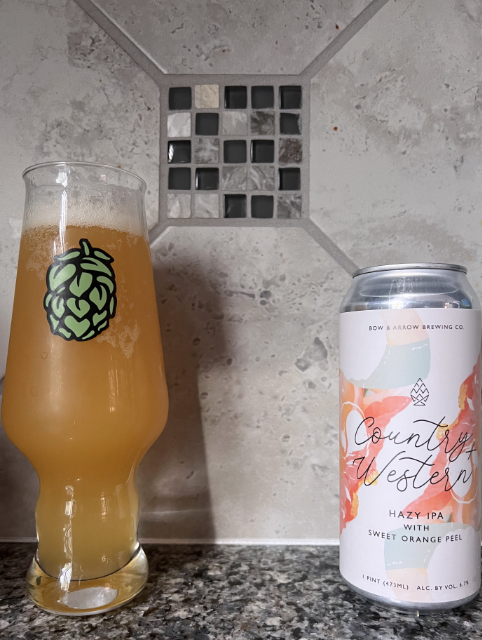
Gravity Bound "From the Abstract" sour IPA with strawberry
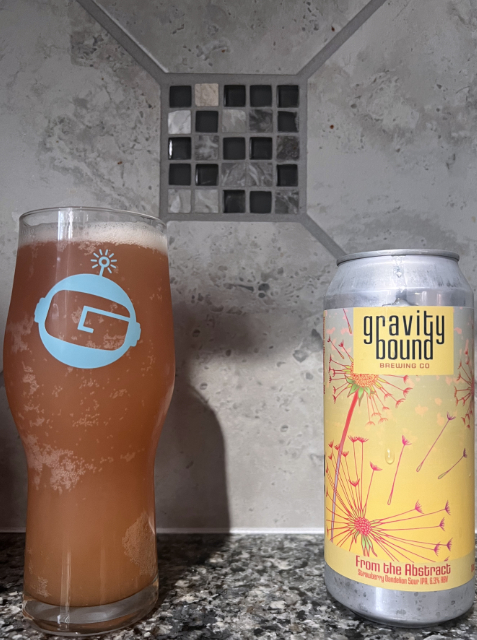
Ex Novo "Farm Bier" kellerbier. Brewed for local restaurant "Farm & Table" (one of our fave spots for a nice dinner out)

Bow & Arrow "Country & Western" IPA with orange peel

Gravity Bound "From the Abstract" sour IPA with strawberry

Curious about this one. How was it?Bow & Arrow "Country & Western" IPA with orange peel
Another good tripel. (I haven't encountered many bad ones.)


Sorry for the pause....meant to reply but got distracted then forgot.Curious about this one. How was it?
Bow & Arrow are very good. Their hazy's are less "hazy" than a lot of places, less juice bomb and almost a cross between NE and WC. The orange peel added a little extra citrus to the mix making it a nice crossover brew.
Friday....home from work after another busy day/week (29K steps so far today!)
La Cumbre "Zuzax" kolsch
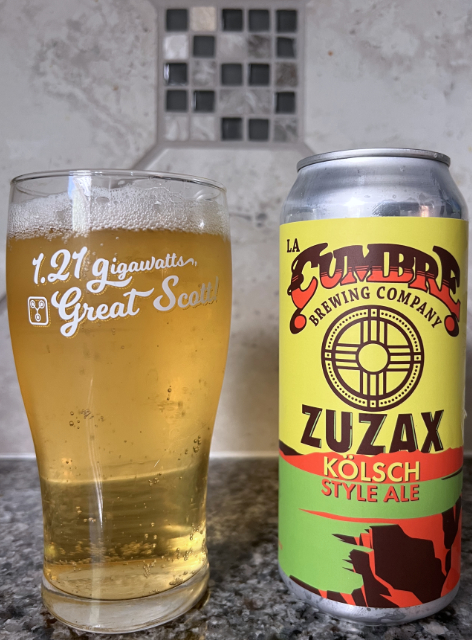
Bow & Arrow "Lavaland" pilsner
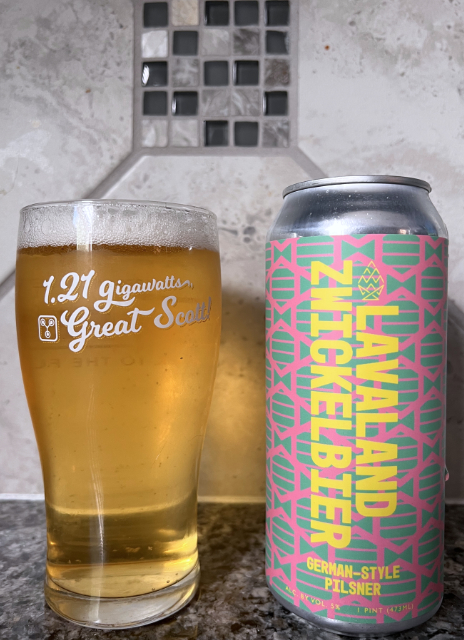
Strilo
1K Club - QQ Shooting Star
I love Ex Novo!
Fishing around on the bottom shelf, found this oldie at the back and it needs to be dealt with!
Ex Novo "Because People Like to Say Salsa" sour
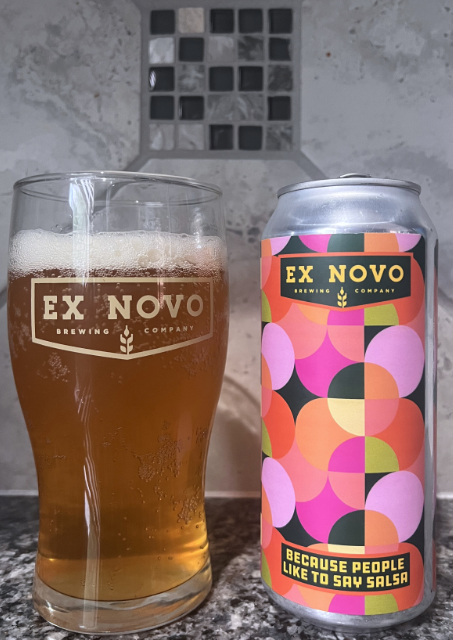
and a couple I enjoyed later last night but didn't post:
Gravity Bound "From the Abstract" sour IPA with strawberry and dandelion. I like this beer....first time you taste it it's a bit of a wtf is this but once you "get it" it is super enjoyable.
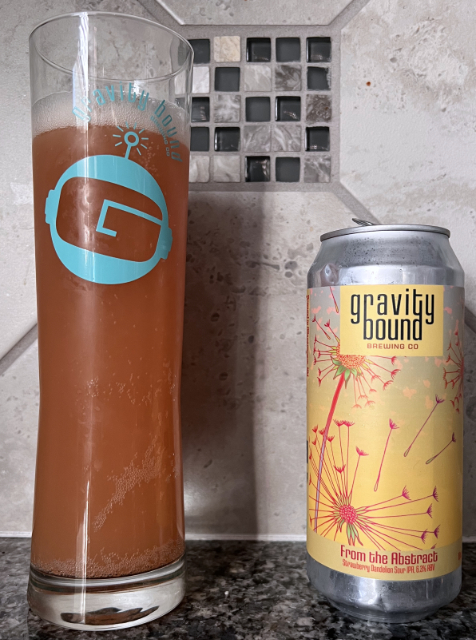
La Cumbre "Imaginary Friends" hazy DIPA. LC rarely disappoints with any of their brews.
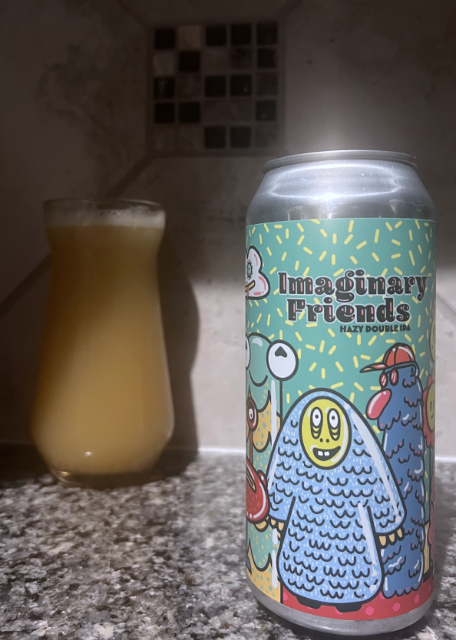
Ex Novo "Because People Like to Say Salsa" sour

and a couple I enjoyed later last night but didn't post:
Gravity Bound "From the Abstract" sour IPA with strawberry and dandelion. I like this beer....first time you taste it it's a bit of a wtf is this but once you "get it" it is super enjoyable.

La Cumbre "Imaginary Friends" hazy DIPA. LC rarely disappoints with any of their brews.

I love Ex Novo!
I'm really glad they are doing so well here. They picked a great spot, big property...expanded the outdoor area....a couple open grass areas for kids to play. They know their area well....they have a tie-up spot should you arrive on horseback!
I'll have another one of their excellent beers...."Mass Ascension" IPA

Pollyanna Brewing Company. Lemont , IL compliments of my Chicago based daughter. A nice 6.3 hazy DIPA to enjoy on a beautiful Sunday afternoon in West Carlisle.


Grolsch was the very first beer I ever drank that expanded my horizons from my very narrow understanding of what beer could be. Meaning, I was all Budweiser, Michelob and maybe some Busch (not light). It had to be somewhere around 1987 I think. I had a new job, and finally, some travel outside of central Illinois. I was in West Bend, Wisconsin at some restaurant and I remember seeing this bottle on the menu. I'm like, WTF is this??!! For sure, my taste buds were shocked into life at that point, and I never turned back. Always experimenting with new beers, new trends, new tastes.
Fresh. Local. IPA. The Mitten in Grand Rapids. Great beer and incredible pizza !!!!! Pizza and beer, does it get any better than that ? I affectionately call this Foghat beer.


Similar threads
- Replies
- 23
- Views
- 3K
- Replies
- 38
- Views
- 4K
- Replies
- 31
- Views
- 4K















